Tired of dealing with a managing agent who doesn’t listen to your concerns or charges excessive fees? You’re at the right place, thousands of leaseholders across the UK are taking control through the right to manage process. The process can seem complex, but it’s actually more straightforward than most people think.
At Real Estate Agents London, we’ve helped numerous leaseholder groups successfully understand the this process. This comprehensive guide will explain your legal rights and help you avoid common mistakes, whether you’re dealing with poor maintenance or high service charges.
What is the Right to Manage Process in the UK?
The right to manage process allows flat owners to take control of their building’s management without purchasing the freehold. It’s a law from 2002 that gives leaseholders the power to form their own management company and choose their own managing agents.
Once you succeed, you get to decide about repairs, maintenance, insurance, and service charges. This often means better building supervision and lower costs, which can attract tenants seeking guaranteed rent deals. This process works for most residential buildings with two or more flats, as long as you meet the basic rules. Below you can find all the needed steps well explained.

The RTM Process Step by Step Explained
The right to manage process involves several key steps that must be followed in the correct order to avoid delays or rejection. Many leaseholder groups find it helpful to work with professional services that understand property and block management for transparent records. Here’s the complete step-by-step breakdown of the RTM process from start to finish.
Step 1: What is the basic Criteria for RTM?
Below is the full criteria mentioned to qualify for the RTM process.
- Basic Building Requirements:
Your building must have at least two flats to qualify for the right to manage process. At least two-thirds of these flats must be owned by long leaseholders with leases originally granted for more than 21 years.
- Participation Rules:
You need at least half of the qualifying leaseholders to join the RTM process. This means if you have 10 qualifying flats, at least five leaseholders must participate to move forward.
- Commercial Space Limits:
Non-residential areas, such as shops or offices, cannot occupy more than 50% of the building’s total floor area. If they do, your building won’t qualify for the process.
- Resident Landlord Exception:
Buildings with four flats or fewer won’t qualify if the landlord lives in one of the flats as their main home.
Step 2: What is the Procedure to RTM?
To start the process, follow the steps to ensure a smooth and reliable process.
- Set Up Your RTM Company:
Form an RTM company using the prescribed Articles of Association. This company takes over management duties through the right to manage process.
- Serve Participation Notice:
Send invitation notices to non-participating leaseholders. Wait 2 weeks before proceeding with the RTM process.
- Serve Notice of Claim:
Send the formal Notice of Claim to your freeholder. This technical document should be professionally prepared for the right to manage process.
- Freeholder Challenge Period:
Freeholders have one month to challenge your right to manage claim. Challenges go to the First-tier Tribunal.
- Acquisition Date:
Without challenge, you get four months after serving Notice of Claim. The freeholder must transfer the contractor details.
Step 3: How to manage the RTM process?
If you want to manage your RTM process effectively, then follow these steps for chosing the agent/ chose the agents carefully.
- Choose Your Managing Agents:
The RTM company can keep existing contractors or appoint new managing agents. You’re free to manage the building yourself through this process. - Take Over Management Functions:
Your RTM company handles all lease management duties, though the freeholder must be kept informed about consents for alterations or letting arrangements.
- Enforcement Powers:
The RTM company can enforce lease obligations, but cannot use penalty procedures. The freeholder can apply to join the RTM company after acquisition.
- Company Structure:
Your RTM company must follow company law and the prescribed Articles of Association, including appointing Directors to run the process properly.
Costs and Legal Fees
This process involves costs that leaseholders must budget for upfront. Recent changes in 2025 have altered the calculation and recovery of these fees.
- RTM Company Formation and Administrative Fees:
Companies House registration costs £12-£40 plus professional fees for legal documents and Articles of Association. - Reasonable Costs:
You will pay the freeholder’s reasonable legal costs if your claim is successful, typically £500-£3,000, depending on the size of the building. - Legal Changes to Costs in 2025:
New rules limit freeholder cost recovery and require detailed breakdowns of expenses. Leaseholders can now challenge unreasonable fees more easily in this process.
Conclusion:
The right to manage process gives leaseholders real control over their building management. New changes from the Leasehold and Freehold Reform Act make it easier to qualify, cost less money, and simplify the whole process. These updates mean stronger rights for leaseholders and better protection when managing buildings. If you’re thinking about using this process, understanding these new rules will help you make the best decisions for your property.
Frequently Asked Questions (FAQs)
- What is the Right to Manage process?
The right to manage process allows leaseholders to take control of their building’s management without purchasing the freehold or proving that their landlord has done anything wrong.
- How long does the Right to Manage process take?
The right to manage process typically takes 6-8 months from start to finish, including the 4-month statutory period after serving notice.
- What are the requirements for RTM?
Your building requires at least two flats, with two-thirds of the tenants being long leaseholders, and at least half of the tenants must participate in the right-to-manage process.
- Who is a qualifying tenant for RTM?
Leaseholders with leases originally granted for more than 21 years qualify to participate in the this process.
- Can a freeholder refuse the Right to Manage?
Freeholders can challenge the right to manage claim within one month, but they must prove that you don’t meet the legal requirements.
What are the steps in the RTM process?
The right to manage process involves checking eligibility, forming an RTM company, serving notices, waiting for responses, and assuming management after four months.


